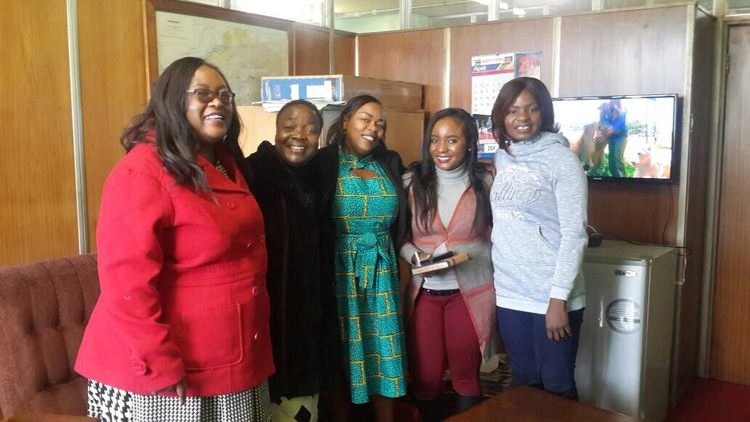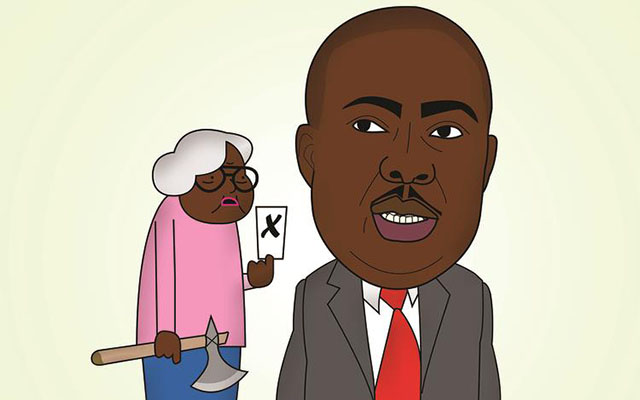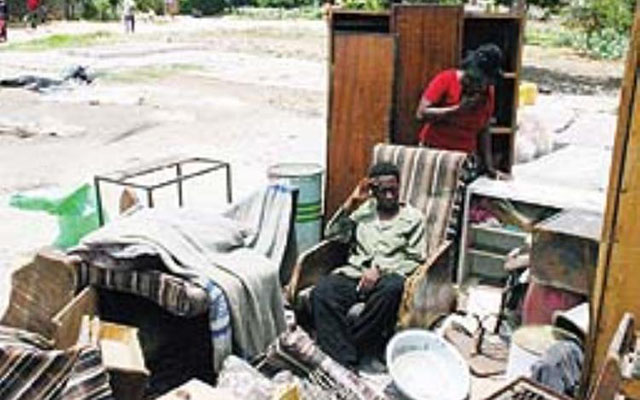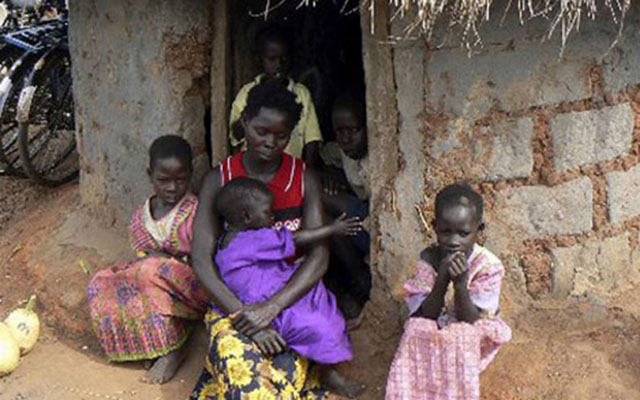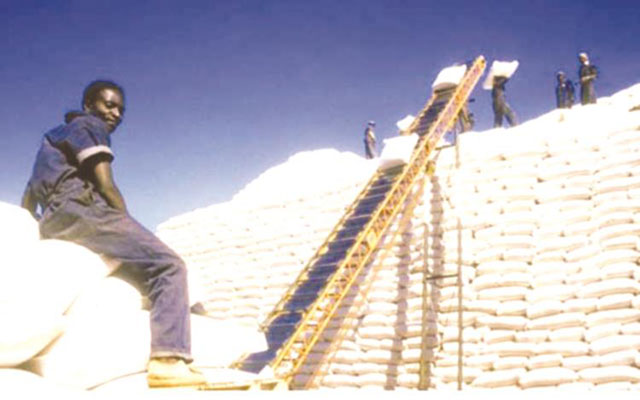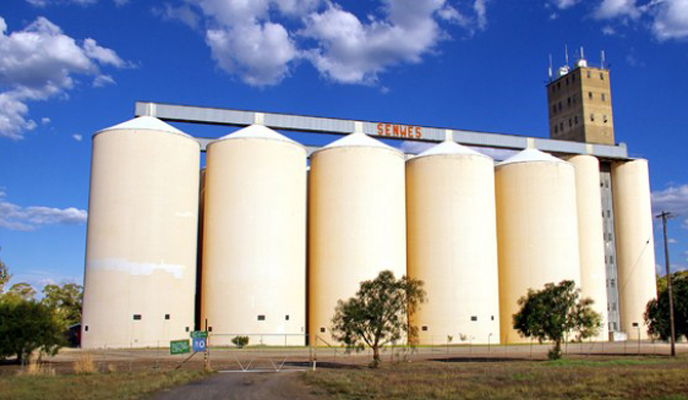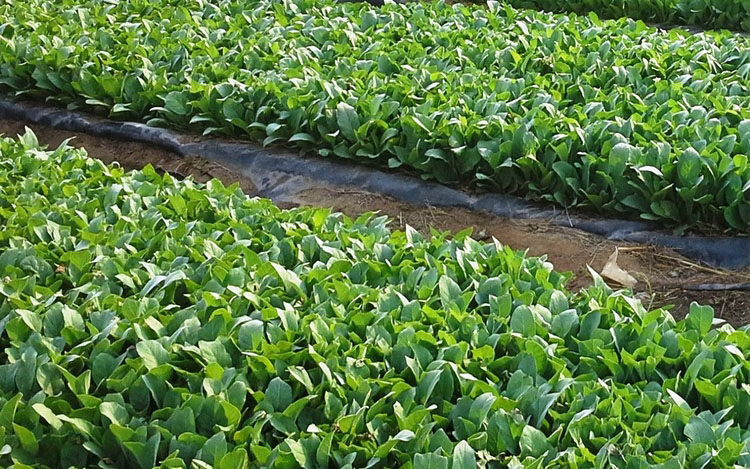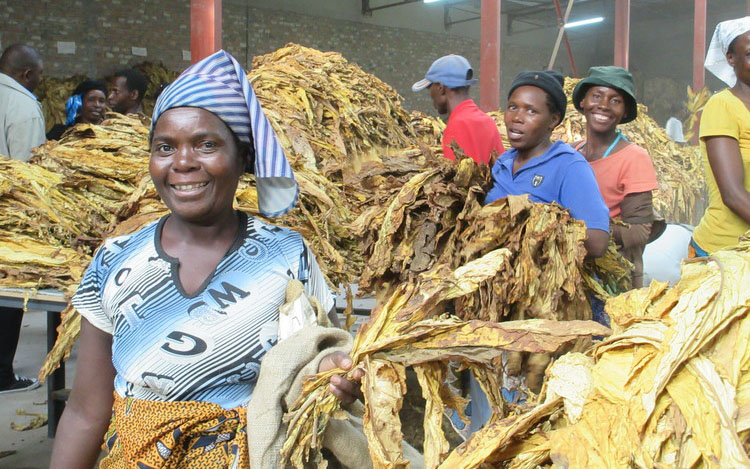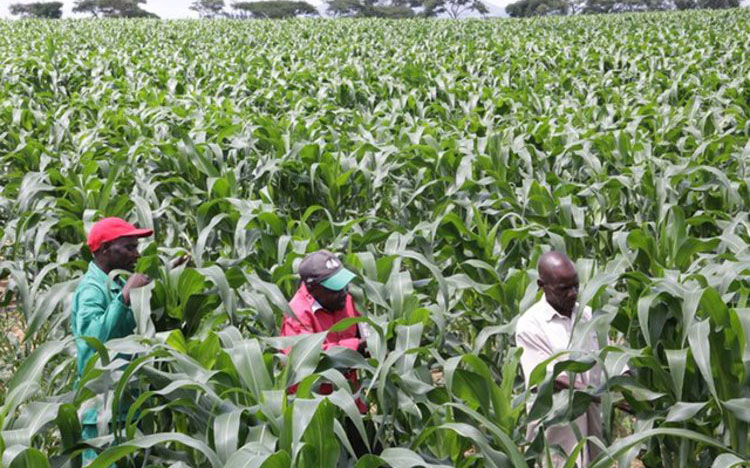![ZDF Commander General Constantino Guveya Nyikadzino Chiwenga - File Pic]()
ZDF Commander General Constantino Guveya Nyikadzino Chiwenga – File Pic
Gen. Constantino Chiwenga Commander Zim Defence Forces
THE reason we need to speak is about our land, from which we came from. On Creation, those who are Christians, or those who are not atheists, you are aware that God created everything but at the end created the Garden of Eden. It’s there in Genesis. And then took the mud, kana kuti watinoti munyakwe and built what is now called the human being, and breathed into him to bring him to life. That’s our forefather.
That is the beginning of people, Adam.
After many years, God found that man alone, Adam wanted someone to be with him; to cherish him, to be friends with him.
And so he was put to sleep and the rib was taken from Adam and Eve was created.
But they were put in the Garden of Eden, and what resembles the Garden of Eden today is every nation: that’s your Garden of Eden.
In Zimbabwe, from the Zambezi to the Limpopo – like our national anthem says – that’s our Garden of Eden, which has got everything.
Besides us human beings, it has got mountains, rivers, trees, all types of trees, grass, the creatures, from the ants and those that creep on the ground, the ones which can walk, birds which can fly – everything.
From the beginning, man was given dominion over them. So us as Zimbabweans we have dominion over these. And if we have dominion over these, all these, what we can’t see underneath, our natural resources,
What we see – our natural resources, birds, animals, trees, everything we see – that is what God said we must protect. The names were given long back.
We have our country, Zimbabwe, where there was order from the beginning. Where order was not observed, the individual was sanctioned; there was punishment that was meted out on those who would have not followed the rules and regulations as defined from time to time by the emperor, the king, the chiefs – whoever was in charge at any given time.
Everything had to with this being our land; that is number one.
Two, the resources which are there belong to the people.
So each and every one would say this is my land, these are our resources. But those resources were exploited with order.
After the Berlin Conference, 1884 to 1885, on 13 February when they signed the Berlin Treaty, the Europeans who had undergone industrialisation at that time, all agreed that they wanted to build their capitals, their countries, and decided to come to the rich black Africa and partition it.
That was against the will of the black people. Remember we had also suffered the Slave Trade. This was the second suffering, we had to get.
Here in Zimbabwe the whites were never welcomed, like they were never welcomed in most, if not all, African countries.
But the difference is, in 1890 when Colonel Pennefather and Leander Starr Jameson came in heading the Pioneer Column after having been assembled at Mafeking by Cecil John Rhodes to come to our country, our forefathers never accepted them.
Yes, in every nation you get sellouts, you get quislings, you get people who have nothing to lose. If their treasure, what they cherish as a nation, is taken away by a stranger, some people don’t care because they are born like that.
In 1893 war was fought from Matabelaland.
But the actual war first started in Masvingo at Fairfields, going to Mvuma, to Lalapanzi, that’s where Mugandani fell with his regiment which was in Mberengwa.
Those who had crossed the Shangani River, led by this chap who did reconnaissance, Allan Wilson, they were butchered.
But then artillery came from all the forts heading for the capital, Chingururu – as Lobengula was known on this other side of the land – then retreated.
Mukwati – if this war was not co-ordinated how then could Mukwati come all the way from Matabeleland to Mhondoro to see Gumboreshumba, who was possessed by the Spirit of Kaguvi?
He came to say Chingururu, Lobengula, has fallen. These whites want to fight.
And together they went to Mazowe, kuGomba, to say hondo kuno uku yatanga.
They fought. The first white to be killed here was killed in Mazowe. And Mbuya Nehanda and those chiefs – today we would call them generals – they all came to Dzivarasekwa.
This was the last pitched battle to be fought here, and they were defeated because they were fighting in pockets.
Mashayamombe after he had overrun the fort of the whites and captured the women, he was also defeated. And then they went to Chingaira, Makoni.
Reinforcements were coming through Beira.
Starting with Munyarari Zimunya, they decapitated him. That’s why vachiti Munyarari wakachekwa, handiti?
Makoni was defeated.
But the war did not stop. Even with the hanging of Mbuya Nehanda and Sekuru Kaguvi in 1898, war still continued.
There was Kadungure Mapondera: 1904 he was then captured in Mutoko and that’s the end of Chimurenga I.
It is called the War of Chindunduma. This is because people could not bury their dead. They just rotted like animals.
So inonzi vanhu vakandunduvira kusvikira vaputika, kusvika vadyiwa nezvikara zvesango pasina anokwanisa kuviga mumwe.
But what is it that they were fighting for? They were fighting for their heritage -the soil, ivhu. That’s what they were fighting for.
And in this soil, that’s where the natural resources are, God-given natural resources.
When you have your children, they will grow and they will say one day I also want my own stand, I also want my field, I also want my area where I will keep my cattle, my goats, my sheep, my donkeys, my everything.
Unfortunately, the country does not expand. What we were given remains like that.
So they fought and this is the same spirit that 60 years later inspired the people to start the Second Chimurenga, this time much more clever than they were, more united, disciplined.
There is a lot that informed the struggle, but people were determined to take back their land.
What is it that motivated the war? There are two things.
They wanted to be independent like any other country that has got self-rule, to determine who should rule you. One man one vote, as our elders would say.
The second grievance was economic emancipation, and land is at the core of that emancipation.
So you see the issue of the land, the issue of independence, goes back to 1890 when the whites came here.
Those two reasons never changed.
The other things which came in, the brutality to suppress the black person, where some of the grievances were used to strengthen the cause of the national grievances.
Otherwise the national grievances always remained two: our land and our independence.
This is what has caused all those mass graves.
Of all liberation movements in Southern Africa, there is no liberation movement that has as many mass graves as Zimbabwe.
Mozambique, everyone goes there to see Nyadzonya where thousands were put in mass graves; boys and girls buried together, those children who had followed to Mozambique, who we called vatoto, buried in the same mass graves.
It’s inhuman to bury people in one grave but there was no choice. It was better not to do like veChindunduma wehondo yekutanga.
They were near Pungwe River. Some were swept by the river. Some died in the bushes and were never discovered, and they just rotted there.
Today people come across skeletons and ask, ‘‘who is this person?’’ And they try to figure out how that person died.
Today Nyadzonya is a shrine.
It’s the same at Chimoio where a museum is now being built so that generations upon generations to come will remember that here lie the gallant fighters of Zimbabwe. Why did they die? For their land.
The same with Tembwe in the Tete province of Mozambique.
We are just mentioning these but wherever there were Zimbabweans, be it at Doroi, be it at Chibawawa. There are massive graves; people dying of hunger, people dying of disease. Maybe some are better because they are in single graves – but there are so many.
Across in Zambia, you go to Freedom Camp, it is the same thing. There you can see the roll of honour of the Zambians who died together with the Zimbabweans; buried in those mass graves.
You go to Mukushi in Kabwe. There are so many other smaller areas where people died. Even in Angola where the Rhodesians went to attack. I’m coming from Angola and they have not finished the demining, and we shall also go there to honour those people, to say our people were bombed here, and mark those areas for posterity and for the generations to know.
They were fighting and dying for those two issues: the land and our independence, our sovereignty.
During the negotiations, the issue of the land was so topical that it consumed most of the time. If I’m not mistaken from October right up to December in 1979.
We were discussing land.
And true, our leaders said we can never repay a thief. You steal my bicycle, or my motor vehicle and say because I didn’t have a licence at that time then the vehicle is yours?
No, the vehicle still belongs to me.
On a compassionate basis we can say okay, because you are a thief and you built something on land that you stole from me, we can compensate you only for what you built.
But not for the land.
So our leaders showed they have a human face. They said fine you are thieves but if you developed something, we compensate but not the land.
We came holding our national flag and we were independent but we were not independent in terms of that economic emancipation of which we said land was at the core.
And the reasons for that are known.
Members of the Frontline States came and the President had to make an unthinkable decision.
They said if you take the land now it means bloodshed in South Africa, bloodshed in Namibia. Remember, South Africa had taken Namibia as its own colony.
So the Frontline States presidents, the late Nyerere, late Samora, Kaunda, said no you can take the land later, not now.
So South Africa gets independence in 1994, but the British were still dilly-dallying and we took the land in 2000.
We said now we want our land. Our people must be moved from those mountains.
Some of us, it pains, because our people were driven to unthinkable areas; the Svosve people were in very difficult areas.
When we moved, together with the ex-combatants, to take the land, there was joy.
In the meantime the whites were taking all the equipment; centre pivots, tractors, breaking them down into scrap and were going.
You can go across Zambia and you will see equipment which was moved from here.
Little did we know that most of the garages where tractors were being serviced were owned by these farmers, and so the equipment dried up.
Even financial institutions at that time could not support land reform.
There were so many other things which were done to build our agriculture: Operation Maguta, farm mechanisation programmes.
All these were efforts to develop agriculture.
But none has reached the extent of Command Agriculture.
Government is not paying a cent for that. The money is coming from Zimbabweans themselves. Now financial institutions, individuals, various funds all coming together.
We will see this coming season it will be even more. Funds of every kind – be they insurance, be they pensions – they will be coming; congregating under the Office of the President and Cabinet.
God has also said we understand you and has opened the skies.
And for the first time since the year 2000 this is the only time we have had our own food and we don’t have to import.
Whatever cent we get from our industry or manufacturing sector, be it tourism, be it mining, it will now go back to the development of the country and not to take that money and import food.
So we ask the question: Who is saying this is a bad programme? A programme which has been spearheaded, approved by the Commander-in-Chief of the Zimbabwe Defence Forces, Head of State and Government, His Excellency the President of the Republic of Zimbabwe.
You go and say no that is not right?
He pronounced himself in Marondera when he was addressing the youth. He pronounced the same thing in Manicaland.
And you say no, this is now bringing Communism.
What is Command? Command means you are commanding yourself to do a thing, not that you are being commanded by somebody.
We are not slaves here. We are doing these things for ourselves and the future generations. We have to change our work ethics.
Now we see some of these people, they have farmed 80 hectares with inputs – seeds, fertilisers – from Command Agriculture, and they are talking of a bumper harvest.
You are talking of people not bringing maize to the GMB. Where is that coming from?
The financiers are giving straight to the farmers, and there are people down there who are supervising to make sure that the maize, the crop goes to GMB.
So where does the Government lose? The Government is not going to lose anything.
And in any case the interest rates are very low. In 2016-2017 they were 5 percent but this coming year they are going to be 4 percent.
We want to see our people now becoming rich from the soil. Hupfumi hunotangira pavhu. Kana munhu afunga kuti hupfumi hunotangira kubva ku mining kana ku industry, kwete ku hunotangira pavhu then other things follow later because chakatanga ndicho chakatanga.
When our people are well fed, have enough food for themselves, they are now able to go and work in industry, to go and work in the factories, to go and work in the manufacturing sector, to go and work in infrastructure development, to go and work with a smile in the tourism industry, to work with vigour in the mines, because they have eaten well.
When they are hungry you cannot expect that. A hungry person is a dangerous person.
So these people who are talking against Command Agriculture, linking it to unthinkable things, they are no different from those in Sodom and Gomorrah; ma homosexuals aya.
Where Lot’s wife akaita churu chemunyu.
If a person cannot command himself and thinks he does not belong to this country; he’s an alien, he belongs to another planet. He should go to that planet – leave the people of Zimbabwe alone.
We know very well that this a project which is being well funded.
If we put all that person’s articles together we can surmise that they have bought the editorial policy of that paper.
We have fought a bitter armed struggle and we have never seen it that whatever was discussed at the High Command was leaked to the cadres. What was discussed at the Central Committee of the party was respected and they would tell the cadres what they need to know.
They could argue and no one would ever talk.
We were in the front. We would meet the commanders and sometimes dis-agree on strategy but it would never reach the ears of the fighters.
Even those who were there to record what was being discussed would never open their mouths.
Now before a meeting is complete we already see it on Twitter. What is that?
Discipline has been completely lost. Now it shows when individuals come and say I will destroy, not only the party, but the entire system from inside.
The papers are there for everyone to read.
We say enough is enough! This nonsense can no longer be tolerated at all.
People have perished because of this land, ivhu ndiro rakafira vanhu.
At Independence when we came back, we had to bury 157 skeletons at Dzivarasekwa. Ndiyo our first Heroes Acre iyi, vataiti those vakandunduvira, vasina akaviga, vakadiywa nezvipuka zvesango.
Imagine from 1896 only to bury them in the ‘80s? Then somebody comes in to say no, this thing does not work.
Iwewe saani?
You think you can divide people, kuita divide and rule, and bring confusion to the people. No, it doesn’t work like that.
Mweya uyu wauya uyu wekwana Sodom ne Gomorrah wengochani uyu, ngaudzokere kwawakabva, unoda kupumhwa, uende kwawo.
Zimbabwe inyika yakadiwa naJehovah, handiti? Ine hupfumi husingapere.
And programme iyi tichaitsigira and tinoitsigira tichitsigira Commander-in-Chief wedu kuti inotofanirwa kutoti iitike kusvika yapera.
Pakambenge paiswa makore matatu ka, iye zvino akawedzerwa kuita mashanu, kuti tigadzirise food security yedu.
Zviri muZim-Asset izvozvo, nyaya yefood security, yenutrition.
To achieve it we must be able to command ourselves.
Hauende kunopfugama woisa maoko mudenga woti Mwari achadonhedza chikafu. Nguva yezvihuta nemanna yaana Moses yakapfura.
Mwari muGenesis, tateguru atadza, akati uchadya cheziya, handiti? Saka tirikudya cheziya.
Yes, you must be commanded to do something for yourself. Nobody is going to work for someone.
What we cannot do is to continue to buy food when we have such rich soils.
So freedom yes, but freedom must be with discipline.
People may ask why the Commander-in-Chief of the Zimbabwe Defence Forces is speaking about these things.
I will ask: are we not citizens of this country?
And in any case who is doing this on the ground together with the people?
In the OPC there is VaMupamhanga who chairs the subcommittee which is working under the Ministerial Committee which is chaired by the VP. Chairman. VaMupamhanga is deputised by Air Marshal, helping.
If we build colleges and universities and study strategy then where is that strategy going to be utilised?
You think strategy is only for war? Strategy is also for survival.
And food security is one of the pillars of national security. The military has a duty to assist in building the economy. When you attack the economy you become an enemy of the State.
And this Command Agriculture, did it favour any political party or did it favour all Zimbabweans? Does hunger choose which party it must affect?
This guy who is vomiting that nonsense, didn’t he get support from Command Agriculture?
He has some other forces behind him? Hasn’t he written in his books that he is going to destroy from within?
We read. We are all educated. We read.
He has said that.
Everyone must see. He rebelled before. Not once. He rebelled when we were in the struggle, he ran away. When he was here he did all his nonsense, his column in The Financial Gazette.
And in his book, when he was teaching, in his commentary on why he went to America – we know.
When he left and went independent, was he repentant?
And we know now that the tweeting is coming from Baba Jukwa and company; we know that.
But I think he has got to where we wanted him to. Let me leave it at that.
This is excerpted from an interview Herald Editor-in-Chief Caesar Zvayi and Sunday Mail Editor Mabasa Sasa had with Commander Zimbabwe Defence Forces General Constantino Guveya Dominic Nyikadzino Chiwenga in Harare on June 26, 2017.
